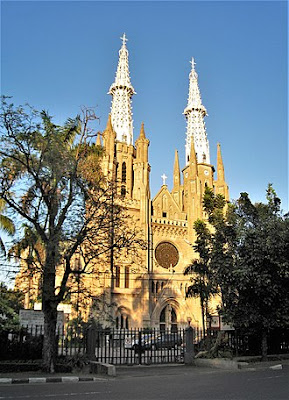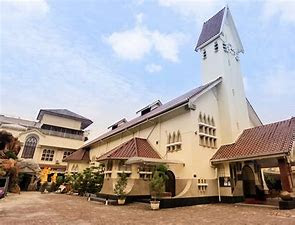South Asia-1
This blog will discuss the Catholic Church in Bangladesh, Myanmar (Burma) and Pakistan.
Bangladesh
What is now Bangladesh was part of several empires for most of its history and became part of British India in the 19th Century. Pakistan (East and West) broke from newly-independent India in 1947. East Pakistan or Bangladesh, separated from the rest of Pakistan in 1971.
Islam was introduced in the region in the 10th Century and Jesuit, Dominican, and Augustinian missionaries—mostly from Portugal—brought Catholicism to the area in the 16th Century. Today, Muslims make up 89 percent of Bangladesh’s 163 million people. Another 10 percent are Hindu. There are about 400,000 Catholics served by two ecclesiastic provinces—Dhaka and Chattogram.
Province of Dhaka
The province consists of the civil divisions of Dhaka, Mymensingh, Rajshahi, Rangpur, and Sylhet in Northern and Central Bangladesh. The Metropolitan Archdiocese of Dhaka began as the Apostolic Vicariate of Eastern Bengal in 1850. This became a diocese in 1886 and the Metropolitan Archdiocese of Dhaka was established in 1950. St. Mary’s Cathedral (Immaculate Conception) in Dhaka was built in 1956.
From Wikipedia.
The Province has four suffragan dioceses.
- The Diocese of Dinajpur was created in 1927.
- The Diocese of Mymensingh was created in 1987.
- The Diocese of Rajshahi was created in 1990.
- The Diocese of Sylhet was created in 2011.
Province of Chattogram
The province consists of the civil divisions of Chittagong, Barisal, and Khulna in southern Bangladesh. The Metropolitan Archdiocese of Chattogram began as a diocese in 1927 and became a metropolitan archdiocese in 2017. Our Lady of the Holy Rosary Cathedral in Chittagong was built in 1843 and renovated in 1933.
From Wikipedia.
The Province has two suffragan dioceses.
- The Diocese of Khulna was created in 1952.
- The Diocese of Barishal was created in 2015.
Myanmar (Burma)
Burma became part of the British Indian Empire in the 19th Century after the British conquered and consolidated several kingdoms. Burma gained independence from the British in 1948 and was renamed Myanmar in 1989.
Catholicism came to Burma around 1500 along with Portuguese merchants, but serious evangelization did not begin until Barnabite (Clerics Regular of St. Paul) missionaries came in the 18th Century. The population of Myanmar is 57 million and 88 percent are Buddhist and 4 percent are Muslim. Christians account for 6 percent and of those, about 650,000 are Catholic. Catholics are served by one of three ecclesiastic provinces: Mandalay, Yangon (Rangoon), and Taunggyi.
Province of Mandalay
The province consists of northern Mandalay Region, Chin State, Kachin State, northern Shan State, and Sagaing Region in northern Myanmar. (Note: Provincial boundaries for this province and the other two in Myanmar are best estimates.) The Metropolitan Archdiocese of Mandalay was established as the Apostolic Vicariate of Central Burma in 1866, which was renamed Northern Burma in 1870, and Mandalay in 1939. This became the Metropolitan Archdiocese of Mandalay in 1955.
Sacred Heart Cathedral in Mandalay was completed in 1890. The construction was ordered by the Apostolic Vicar at the time, who was a member of the Paris Foreign Missions Society.
From Wikipedia.
The Province has six suffragan dioceses.
- The Diocese of Myitkyina was created as an apostolic prefecture in 1939 and became a diocese in 1961.
- The Diocese of Lashio was created as an apostolic prefecture in 1975 and became a diocese in 1990.
- The Diocese of Hakha was created in 1992.
- The Diocese of Banmaw was created in 2006.
- The Diocese of Kalay was created in 2010.
- The Diocese of Mindat was created in 2025.
Province of Yangon (Rangoon)
The province consists of Yangon Region, Ayeyarwady Region, southern Bago region, Kayin State, Mon State, and Tanintharyi Region in southern Myanmar. The Metropolitan Archdiocese of Yangon was established as the Apostolic Vicariate of Southwestern Burma in 1866, was renamed Southern Burma in 1870, and Rangoon in 1953. This became a metropolitan archdiocese in 1955.
Immaculate Conception (St. Mary’s) Cathedral in Yangon was designed by a Dutch architect and constructed between 1895 and 1899. The neo-Gothic cathedral is built with red brick and cement and has two towers. It can seat 1,500.
All pictures are from Wikipedia.
The Province has four suffragan dioceses.
- The Diocese of Pathein was created in 1955.
- The Diocese of Pyay was created as an apostolic prefecture in 1940 and became a diocese in 1961.
- The Diocese of Mawlamyine was created in 1993.
- The Diocese of Hpa-an was created in 2009.
Province of Taunggyi
The province consists of southern Shan State, northern Bago Region, Kayah State, Magway Region, southern Mandalay Region, Rakhine State, and Naypyidaw Union Territory in central Myanmar. The Diocese of Taunggyi was created in 1961 and was promoted to a metropolitan archdiocese in 1998. St. Joseph’s Cathedral in Taunggyi was organized as a parish in 1873 and the current church dates to 1951.
Pictures are from TripAdvisor and Wikipedia.
The Province has four suffragan dioceses.
- The Diocese of Taungngu was established as the Apostolic Vicariate of Eastern Burma in 1866 and became a diocese in 1955.
- The Diocese of Kengtung was established as an apostolic prefecture in 1927, became an apostolic vicariate in 1950, and was promoted to a diocese in 1955.
- The Diocese of Loikaw was established in 1988.
- The Diocese of Pekhon was established in 2005.
Pakistan
What is now Pakistan was part of several empires for most of its history and became part of British India in the 19th Century. Pakistan (East and West) broke from newly-independent India in 1947. East Pakistan or Bangladesh, separated from the rest of Pakistan in 1971 and West Pakistan became simply Pakistan.
Islam was well established in the region by the 8th Century. Catholic missionaries came to the area in the 16th Century, but met with little success. Serious Catholic evangelization began in the mid-1800s under British rule. Pakistan has 234 million people and over 96 percent belong to the official religion—Islam. There are about a million and a half Catholics and an equal number of Protestants. The Catholics are served by the Provinces of Karachi and Lahore. In addition, the Apostolic Vicariate of Quetta serves over 30,000 Catholics in the civil province of Balochistan and is immediately subject to the Pope. It began as an apostolic prefecture in 2001 before becoming an apostolic vicariate in 2010. (Note: boundaries for this jurisdiction and the two ecclesiastic provinces in Pakistan are best estimates.)
Province of Karachi
The province consists of the civil province of Sindh. The Metropolitan Archdiocese of Karachi was created as a diocese in 1948 and became a metropolitan archdiocese in 1950.
St. Patrick’s Cathedral in Karachi was built between 1878 and 1881 by the Jesuits to replace an 1845 Carmelite church of the same name. The brown brick Gothic Revival church can accommodate almost 2,000 people. The Cathedral’s two dozen stained glass windows were made by the Franz Mayer of Germany and depict biblical themes. There are several oil paintings on the Cathedral’s walls and there is a marble monument to Christ the King on the Cathedral grounds.
The first two pictures are from Flickr and the other three are from Wikipedia.
The Province has one suffragan diocese.
- The Diocese of Hyderabad was established in 1958.
Province of Lahore
The province consists of the civil provinces of Punjab and Khyber Pakhtunkhwa, and the Islamabad Capital Territory. The Diocese of Lahore was established in 1886 and was promoted to a metropolitan archdiocese in 1994.
Sacred Heart Cathedral in Lahore was built in 1907 by Belgian Capuchins. It was designed in a Roman Byzantine style by a Belgian architect and was built with Belgian materials.
The first picture is from Flickr and the others are from Wikipedia.
The Province has three suffragan dioceses.
- The Diocese of Multan began as an apostolic prefecture in 1936 before becoming a diocese in 1939.
- The Diocese of Islamabad-Rawalpindi began as an apostolic prefecture in 1887 before becoming a diocese in 1947.
- The Diocese of Faisalabad was established in 1960.
Definitions
The Catholic Church is mostly divided into ecclesiastical provinces—a province consists of a metropolitan archdiocese and one or more dioceses. The province and the archdiocese are led by an archbishop. Each of the dioceses is called a suffragan diocese and is led by a bishop. Archbishops have some responsibilities for the province, but all bishops answer directly to the Pope. There are also missionary territories below the level of a diocese, which include apostolic vicariates and apostolic prefectures.





















































